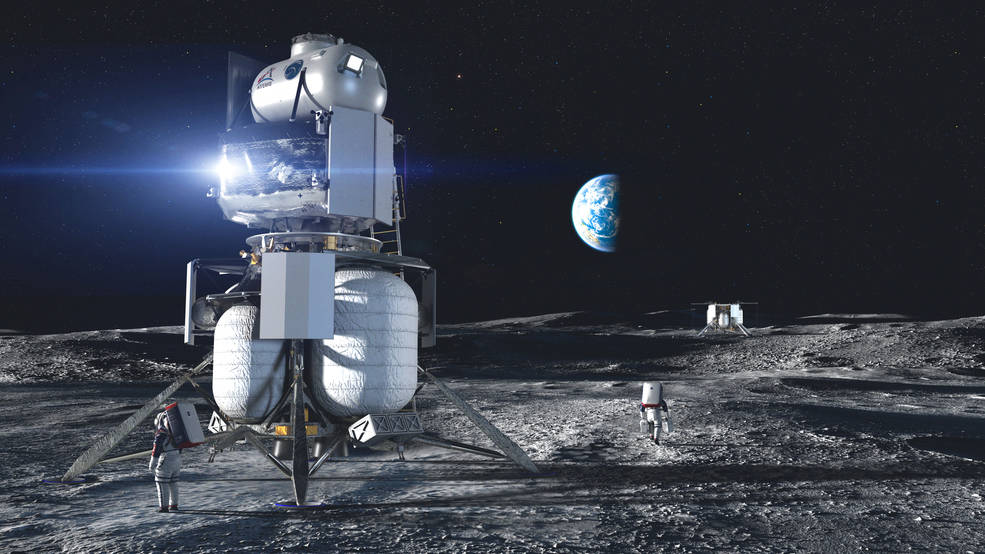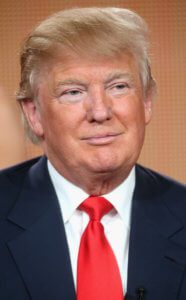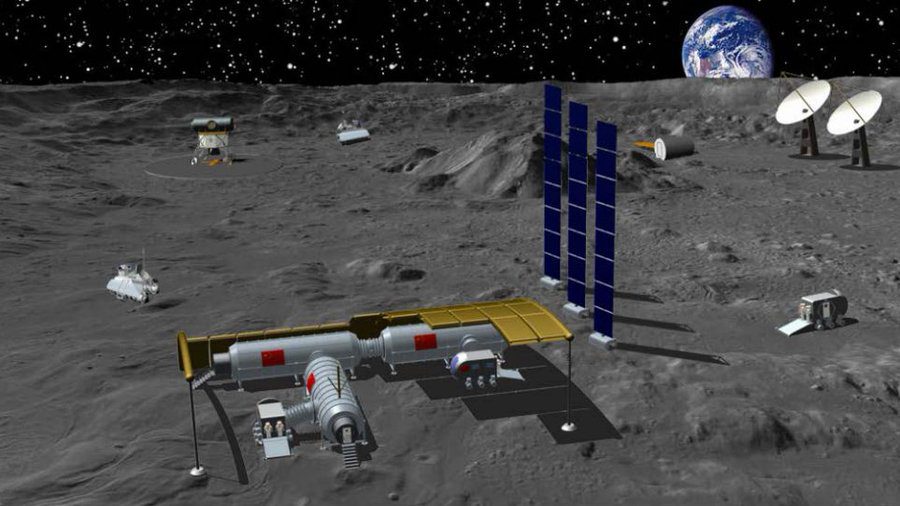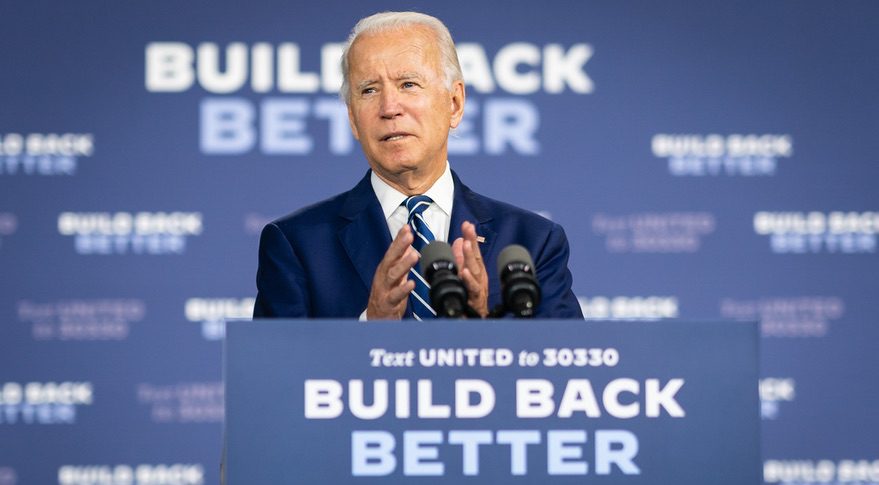With only about a month to go to the US Presidential Election on 3 November, we assess President Donald J. Trump’s successes and failures. While he has made serious – sometimes disastrous – errors, Trump’s opponents and detractors may not like it, but he was not wrong on everything – and may still win. And yet the Biden/Harris Democratic Party ticket does present him with a severe electoral test.
His successes…the US economy (before the pandemic), law and order, getting it right about China…and his failures: the Covid-19 pandemic, failing to stop nuclear proliferation, a supine view of Putin
At the beginning of the year President Trump was looking forward to this election. His tax cuts and liberalisation measures helped fuel strong growth in the economy and a strong rise in the US Stock Market – albeit with a worsening government deficit. But then Covid-19 struck and Trump’s defective handling of the outbreak (mainly his under-reaction) contributed to a death toll of more than 205,000 by the end of September and a severe economic recession. He made things worse by encouraging state governors to relax lockdown measures prematurely, with the result that a second wave of infection has further damaged the economy. In his defence, he did shut some borders/air-routes down early, and many leaders around the world have made similar mistakes in being overly keen to keep their economies open.
Update on 2 October and again on 21 October 2020: President Trump and his wife Melania have since tested positive for Covid-19 infection. President Trump was admitted military hospital with reported “breathing difficulties”. His illness was short and his election campaign restarted even if one televised candidate debate was lost as a result. Trump has been strongly criticised for his interrupting performance in the first televised debate in late September with his Democrat opponent Joe Biden.
The Black Lives Matter campaign protests, while initially getting public support in condemnation of police brutality, especially against the black population, subsequently worked for Trump as some protesters appeared more intent on rioting, arson and looting than in genuine protest. While President Trump was accused of making things worse by inciting counter vigilantism, his constitutionally controversial use of Federal force to regain control of city centres was popular with many.
After initially hopeful signs, Trump’s foreign policy failed to stop North Korea’s nuclear weapons programme as his bluff was called on threats of military action. The Trump Administration made nuclear proliferation worse by withdrawing from the international agreement with Iran, which resulted in it restarting its nuclear weapons programme. The tension with the admittedly belligerent Iran and its terrorist-supporting activities in the Middle East was made worse by the US assassination of one of its generals. This even resulted in the indirect Iranian missile destruction of a Ukrainian airliner and its innocent passengers. That said, this act did appear to cow Iran for a time but whether this continues remains to be seen.
While others in his administration have been openly critical of Russia, Trump has often pointedly refused to condemn Russian President Vladimir Putin for his regime’s malevolent actions around the world. Such acts include annexations, poisonings, airliner shoot-downs, political interference and propping up pariah regimes such as in Syria. Likewise, Trump’s stance on not condemning the Saudi government after the assassination of Jamal Kashoggi is considered immoral by many. Nevertheless, while initially controversial, his backing of Israel over the Palestinians and his attempts to get Arab nations to recognise it have yielded some diplomatic success. On China, Trump is now seen to have been right all along over the now very apparent threat of Chinese expansionism and its disregard of human rights (most recently in respect to the Uighur people and to those in Hong Kong).
The Democrat position: Trump’s defective handling of the pandemic will probably win votes for the Democrats who were already strong on health given the popularity of the “Obamacare” health reforms. However radical political thinking and law and order may yet be electoral losers for the Democrats. To some extent, Joe Biden’s moderate political nature counters the former, while his running mate, Kamala Harris, is strong on the latter. Nevertheless, Trump’s previous economic and electoral success means that while the Democrat side will be keen to keep their core supporters happy with some left-of-centre policies, they dare stray too far to the left on economic and social policy ahead of this election. Likewise, for economic and electoral reasons they are expected to retain at least some of Trump’s tax cuts benefitting middle and working class voters.
While any Biden Administration will want to get the Iranian nuclear deal back on track, with respect to Russia, China and North Korea, it is likely to be at least as hard line as Trump. The current President’s unpredictability was, in some ways, an asset when dealing with potential foes, making them think twice about what he might do. This compares with the overly cautious Obama Administration, with Joe Biden as Vice President, which often seemed reluctant to act – whether over the Assad regime’s use of chemical weapons in Syria or the Islamic State’s involvement in the Middle East. Meanwhile, Democrat inaction (and the inaction of the previous Republican President George W. Bush) resulted in a rogue state like North Korea being able to obtain nuclear weaponry before Trump gained power. On both counts, the Biden campaign still has to convince about its strength and willpower.
Defence and Space Policy: A strong performance with a clear direction (even if he tries to steal the credit from others)
The US threat to withdraw its forces from Europe concentrated the minds of NATO members over the Trump administration’s justified complaint that these rich Western nations were simply not spending enough on their own defence. While Russia was a worry, it was China’s increasing attempts to take control of the South China Sea that concentrated minds in the White House – especially the deployment of anti-aircraft carrier ballistic missiles. After the flat spending years of the Obama administration, President Trump started to dramatically raise the defence budget, although he slightly blotted his pro-military stance by considering raiding the military budget for his anti-immigration Mexican wall. At one stage the US military wanted to reduce the number of its expensive-to-run US Navy aircraft carrier groups, but it was decided to retain these just in case war with China broke out.

Air-dropped hypersonic “Kinzhal” missile carried by Mig-31. Courtesy: Russian Ministry of Defence via BBC
It was not only new ballistic and supersonic anti-ship missiles (including some Iranian designs) that worried US military chiefs. The list of concerning developments includes Chinese and Russian hypersonic missile glide weapons designed to avoid US anti-ballistic missile interceptors, Russian long-range nuclear torpedoes able to strike coastal cities, new deep diving submarines that can cut key communications cables and a new design for continuously flying nuclear-powered cruise missiles. The US Department of Defense has started to plan its own innovative weapons and defences in response.
Space has become a major subject of military thinking, with an acceptance that most weapon systems now rely on it both for targeting information, via electronic and optical reconnaissance systems, and for navigation to reach targets. The new space doctrine includes space as a battleground. In concert with this, the Trump Administration formed a new arm of the US military: the US Space Force. While some made fun of the black flag and camouflage uniforms, it was a sign of intent that space was the new high ground to be fought over.
With respect to civil space, there were moves to put space traffic systems into civil agency hands. NASA Administrator Jim Bridenstine deftly used all his diplomatic skills to straddle the chasm between his own scientists, who believe in climate change and who want Earth environmental monitoring missions to be given a higher priority, and the White House which does not.
On the NASA side, the White House remained keen to put US boots back on the Moon. It set a 2024 deadline for doing so, with Trump’s running mate, Vice President Mike Pence, becoming the driver. While some criticised this quick return plan as an Apollo-like concept that usurped elements of sustainable exploration, others – frustrated by years of dithering delays and cancellations – admired the clarity of direction that this gave. Thus, if Trump does get a second term, a lunar landing will be likely, using the very expensive SLS rocket and Orion combination, beating USA’s competitor on Earth and in Space: China, which has its own human landing and lunar surface base plans.

The Blue Origin-led National Team’s concept for a three-stage lunar lander/ascent/transfer craft. Courtesy: Blue Origin
That is not to say there are no problems. The Lunar Gateway space station, which so many countries wanted to be involved with, has been put on the back burner as it was seen likely to delay the initial human lunar landing rather than accelerate it. Nevertheless, it still figures in NASA’s long-term sustainable lunar exploration plan.
In pursuit of the 2024 plan, development of a reusable lunar lander – the Human Landing System (HLS) – looks fraught due to a combination of relatively low technology readiness and a lack of political willingness by the US Congress to provide the required funding. So far Congress has only allocated US$600 million to the project when US$3.2 billion is needed, although NASA remains hopeful that this money will be freed up after the Presidential election. If not, a simpler expendable lunar lander approach may be required if the 2024 human landing date is to have a chance of being achieved.
The International Space Station (ISS) is getting long in the tooth and yet there is no practical successor. Thus, there could soon be nowhere for the NASA commercial crew effort to go. A fracturing international situation threatens US-Russian cooperation in space – especially on the ISS. Nevertheless, SpaceX successful debuted its commercial crew capability, even if this was disingenuously claimed by Trump as all his own doing. In fact, that successful flight had several presidential fathers including George W. Bush and Barack Obama.
Still, there is hope for the US Space Programme – and Elon Musk and his Super Heavy/Starship design combination looks likely to provide part of the solution to putting humans on the surface of Mars – even if the method for returning to Earth is yet to be fully resolved. As it is, it may be that history will give the Trump Administration part of the credit if such a flight is ever made.
The Democrat position: While traditionally less keen to spend money on defence than other priorities, the increasingly apparent threats of Russia and China are likely to result in any Biden Administration keeping defence spending (and military space spending) up. With respect to the US civil space programme, official announcements show the Democratic Party to be in favour of most of NASA’s plans for going back to the Moon and on to Mars. However, for cost reasons, depressingly, the Democrats seem intent on adding more delays to the timeline for a lunar return. This fuzziness on date setting is a weakness in the Biden space policy and harks back to the dithering and missteps of NASA’s past, including the cancelled Project Constellation.
Nevertheless, Biden can claim to be one of the architects of the commercial crew plan, which is just starting to show fruit. This could be one of the reasons – in addition to its internationalism – why the Democratic Party wants to keep the ISS going to give commercial operators a place to go – even if this will bleed cash from the Project Artemis lunar programme.
Finally, after years of Republican global warming denial, the Democrat’s space programme does have an increased emphasis on studying the Earth, especially in respect to global climate change.
Conclusion and the result: President Trump’s changeable and belligerent character, along with some of his more wayward (sometimes offensive) comments and behaviour, whether related to race, sex, health, his own taxes, or even truth itself, will undoubtedly count against him in the eyes of some voters, as will some of his performance shortfalls in office as noted above. Nevertheless, President Trump’s charisma and political skill often makes him able to exploit the weaknesses of his opponents, meaning that he should never be counted out. Donald Trump also has the talent of being able to tap into hopes, and especially the fears, of the “silent majority”, whether over political correctness and the “cancel culture”, immigration and globalisation’s and effect on their economic prospects, or their almost tribal, often illogical, fear of certain racial minorities and left-wing political ideas. Trump’s effective annexation of these fears to his side, and his hope-giving promise to “Make America Great Again”, may again yield the key states he needs to win a second term.
Before the last US Presidential Election this column originally predicted a win for Democrat challenger Hillary Clinton, and yet, later on in the campaign – once this writer had further examined the US electoral college system and looked at the generous bookmakers’ odds on offer – he wound up betting on Donald Trump who duly won despite losing the popular vote. This time around there will be no direct predictions or tips although this writer will still have a wager with the clue that he hopes, for the sake of political and economic stability that whichever way the result goes, it must be clear cut. This should ideally be via a landslide as President Trump has indicated that he may dispute a result that goes against him.











